Established in 1979 by California Governor Pat Brown among others, this organization has connected labor, business, local government and environmental leaders with elected officials and policymakers to facilitate solutions-oriented and nonpartisan dialogue on California’s fundamental challenges. Wyatt Lundy, Senior Director of Research and Operations, discusses its origin, mission, and how they are bringing people in the industry together.
Discuss the California Foundation on the Environment and the Economy’s (CFEE) origin and the idea behind its creation: At the time that CFEE was created in 1979, there was a sweeping environmental movement going on across the country and recognition that new environmental laws were going to bring big changes to California. However, there was widespread concern about the implications of these new laws, yet there was no constructive way to have group discussions about thoughtfully implementing these environmental rules. So, the idea behind the Foundation was to convene parties with an interest in what was happening environmentally and bring them together in a common forum to learn with each other. The key pillars of the Foundation that have persisted to this day are: 1) organized labor, 2) environmental groups, 3) major businesses with a footprint in California, and 4) local government entities. They are all very different groups with different perspectives and different agendas on environmental and economic policy. The goal was to bring those four groups together along with state policy makers, state legislators, and people from the Governor’s administration office to have common sense discussions about the challenges ahead in California and think through some of the best opportunities to push forward on our environmental and economic agenda. We really evaluate the trade-offs and look for compromise amongst these groups, while trying to find win-win solutions. That has been the mission of the Foundation since 1979 and has continued through today.
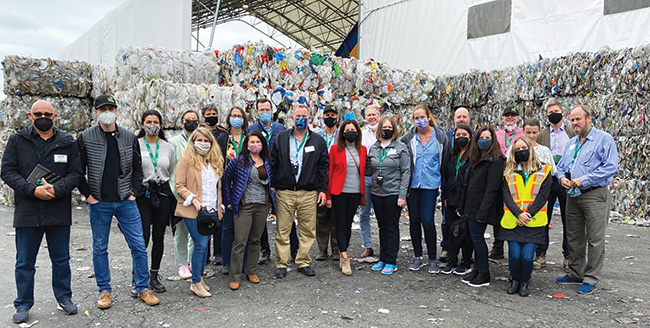
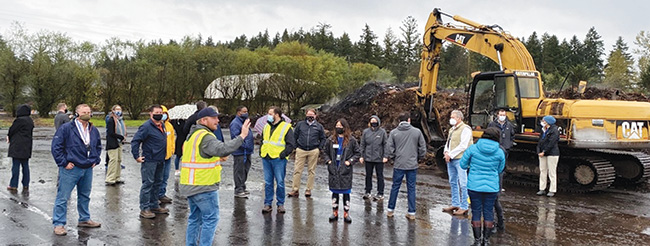
How does CFEE go about bringing these groups together for discussion? We do this through two predominant programs: in-state policy conferences and study abroad travel projects. For the conference portion, we convene approximately 70 to 80 people from companies and organizations, including managers, labor leaders, environmental leaders, our board members, and local government leaders, and state legislators, as well as people from the Governor’s office and regulatory agencies. We design a five-session agenda over two days to discuss important issues, such as energy, water, transportation, telecommunications, etc. and do a deep dive into how these issues are important to California. The idea is to look for a way to push forward on balanced solutions for the state and I think that everybody who comes to our in-state conferences all want a sustainable natural resource base in California as well as broad base economic prosperity—that is really the crux of many conversations that we have.
How are the topics chosen for the conferences?: We start by meeting with a conference steering committee comprised of our board. We ask what are the number one topics of concern and who are the speakers that can bring this conference to life? Who are the key players who are not a part of our board that should be part of the conversation? CFEE staff will then talk with key decisionmakers in the legislature and the Governor’s office to gather their input on the top challenges and opportunities that we should be discussing. As an invitation only event, these conferences are set up with attendees facing each other. There are approximately 50 to 60 seats around a rectangular table with 20 observer seats around the perimeter. The presentations are very short—no more than 10 minutes and no PowerPoint. The idea is to keep the conversation going and have a real roundtable dialogue with less emphasis on formal slide presentations. It is one of the unique forums in our experience because we have state legislators working together—that has been one of the great successes of our conferences. Because we are 501(C)3 non-advocacy entity, we are not telling them how to vote; they know they are coming just to learn with a diverse set of perspectives on how to approach state challenges. At the end of the day, they are able to build relationships with people at these conferences and learn about the issues and how they could really be more effective in the space, whether it’s starting their own bill, etc. We provide the platform for people to decide for themselves which direction they want to take their own legislative agendas—we end up being a solid and reliable resource for people. In 2020 when the pandemic started, we started opening it up to virtual participation and that has enabled us to get a better lineup of speakers and accommodate legislators who want to attend in person, but cannot make it, so now the conferences can be up to 90 or 100 attendees because we have that hybrid component.
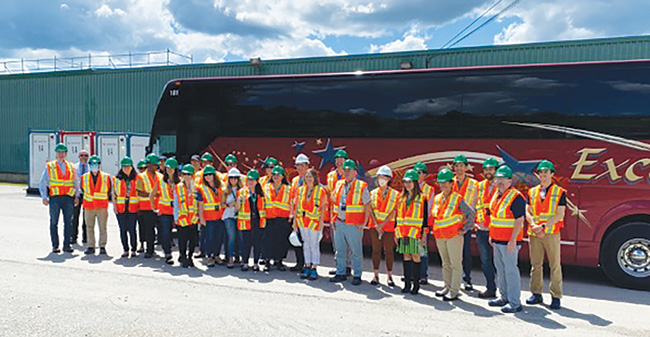
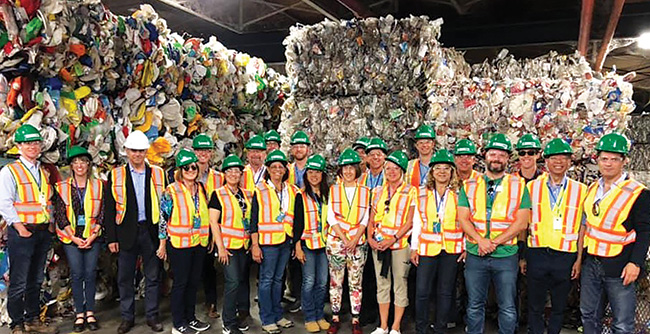
What is involved in CFEE’s study tour program?: Our second program is our international study tours, where we take the show on the road to exchange best practices with leaders from other countries and states. Our delegations consist of approximately 25 to 30 California state leaders, including state legislators and CFEE Board members. The fundamental goal is to look at advanced technologies and promising policy ideas in another state or country that may be instructive for our experiences in California. We are well received because people also want to learn from us, and we facilitate that exchange of insights. While our board can provide ideas about what projects they have heard about or locations that would be a great place to tour, ultimately the decision is made by CFEE President and CEO Jay Hansen.
When the location(s) are chosen, we develop a robust itinerary to help state leaders learn about the issues most relevant to California We arrange all the ground transportation, flights, lodging, facility tours, etc. Many times, Jay and I will do an advance visit a few months before the program to develop relationships with companies interested in hosting our delegation and discuss what we’d like to accomplish on our research tour. These study tours can last anywhere from five to 12 days. For our recycling program, we fly out on Sunday, and we are done by Friday. In that week we pack a lot in to ensure a cohesive and valuable learning experience. These research tours allow our participants to have experiences they would not have had otherwise. It is powerful and transformative.
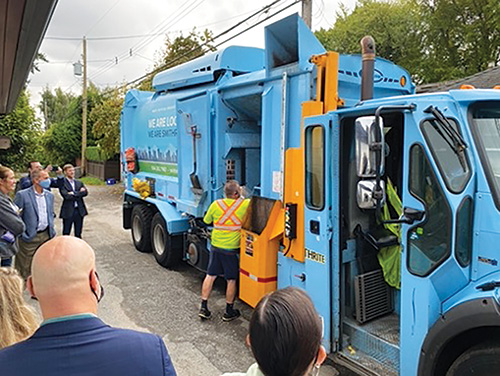
Vancouver.
Are there components of these programs that you have added recently to keep up with changing issues? We have been doing these conferences and these study tours since the beginning of the Foundation and, historically, they did not have any sort of focus on the circular economy or recycling. After China’s National Sword came into effect, Jay and I had discussions with several industry insiders who said they are having serious challenges at ports and recycling centers where a lot of materials were piling up, and they needed to find a new place to put California’s recyclables. California State Treasurer Fiona Ma went to Jay and said this might be a great topic for CFEE. So, in 2019, CFEE collaborated with Fiona Ma and Heidi Sanborn of the National Stewardship Action Council on educating California legislators on what is happening in the state and globally and what that means for our state’s recycling policies and programs. Heidi suggested we visit Vancouver, BC since it has the most comprehensive extended producer responsibility (EPR) regulation in the world and she had a lot of great contacts there who could help us organize a tour. This was our first program in Vancouver; we also paired it with a meeting in Seattle, WA and met with the Department of Ecology and five state senators and representatives who gave us their policy perspective on how they were trying to tackle this very same issue. Based on the feedback from our delegation, it was wildly successful in that we were able to dramatically enhance the level of education that our state leaders received on these vital issues Unfortunately, the next year was 2020 and we were sideswiped by COVID. So, when we traveled in fall of 2020, we came up with first-in-class COVID protocols, working with our healthcare board members. As a result, we came up with one of the first protocols for in-person events during the pandemic. We made sure that everybody was tested regularly before and during the event, mask wearing was required on the buses, we installed high-speed HEPA filters, we had glass partitions between the rows, we did all meetings outdoors for space purposes, we had all our meals outdoors, and we had elevated sanitary protocols according to COVID requirements. It was a great success, and we were able to go to Seattle, WA and Portland, OR with no incidences of COVID. At that point, people had heard about that program and how seriously we were taking COVID, so when we went about setting up our 2021 program, we went back to Vancouver, BC and Toronto, ON with the idea to build off of the knowledge base, and actually started bringing in new people for the delegation and legislators. We also had virtual seminars that year, bringing people together on a zoom call. We had a great turnout of legislators to talk about where California’s progress was in the circular economy and recycling space. We also produced videos at waste management facilities in California, showing what the facility does, how it is related to policy that is being made, etc.
What do people usually see on the tours?: We see how facilities are dealing with their waste and recycling materials. We visit MRFs, recycling centers, landfills, and transfer stations. We also go straight to the source where products are being produced – plastic manufacturers, paper mills, glass bottle plants, you name it! It is all part of the circular economy story, and we strive to expose our delegation to this intricate web of production, consumption, and end-of-life management. Every one of those facilities has a different role to play in managing the waste stream. It helps legislators appreciate what goes into the waste management and how any legislation would affect that process, positively or negatively. On our most recent tour in Portland, ME and Montreal, QC, we saw everything from lobster composting to bottles and cans take-back facilities, to a recycled paper board mill. We also went to a glass manufacturing facility and a lithium-ion recycling plant. We look for a few things when we are scouting locations, such as the latest technologies or the unique ideas that the facility has implemented—those things that can bring the topics to life that a simple meeting cannot always do. We will typically prepare an initial briefing with that facility tour, so it lays out the landscape for the top issues and how it relates to California and what they are doing at this facility. Between the meeting and the experience of seeing the extraordinary machinery in action, people take away something totally different than if it was just one or the other. We always try to pair both so they will have that initial context to appreciate what they saw at the facility. Just reading the history of the facility alone is not quite the same as seeing it in action; the technology that’s in place and the investment and manpower that it takes to run it, people are struck by how impressive it is. Legislators, in particular, have such demand for their time that they don’t necessarily get these experiences, so they appreciate these chances to visit a glass plant or a facility that’s taking electric vehicle car batteries and breaking them down and recycling the components. It gives them more power and capacity to make better decisions legislating these issues because they have seen these places in action.
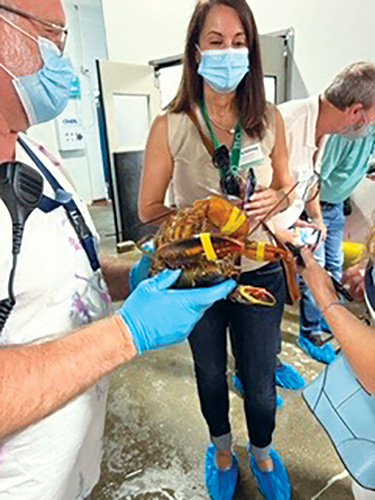
What locations do you plan on visiting in the future?: We are planning on going back to Vancouver, BC because after seeing a few different jurisdictions in Canada, I think we still regard British Columbia as the leader for extended producer responsibility. With the law that they have passed, it’s up to the agency themselves to decide what materials will be under the EPR program—and they just do it. No legislation to wait for; they move quickly. Last year when we visited them, they were at 22 products that were under the EPR regime, and they’ve probably added one or two since then. There are different ways in British Columbia to go about learning about these different products. How do you manage your PRL? How are you going about using the metrics that you’re using to measure it? Has it been a successful transition? I think that’s one of the big debates for people in favor of a circular economy—what materials should be managed by an EPR regimes and what should we do different? So, by going to British Columbia, we can see what is working very well for them and maybe that will make sense for California. We have also been to Ontario and Quebec and are looking to visit other provinces as well. In the future, we would love to add Alberta, New Brunswick, Newfoundland, and Labrador. By going province to province, it provides an invaluable experience for our state leaders to see the tailored approaches to each province’s unique needs.
Have any of these discussions that you have had directly led to an impact on a law voting direction, etc.?: Yes! A few years ago, we hired a group of USC graduate students to ask legislators who have attended CFEE conferences and study tours, what bills have you developed and voted on as a result of your participation in CFEE programs? They came up with a list of dozens of bills over the years that were either directly generated from an experience that a legislator had, or it was a bill that already existed and they had a new perspective on it based off of participating in our events.
One prime example is the landmark truth and labeling bill recently passed in California. It was a direct result of a conversation that legislators had with industry leaders during one of our recycling tours. We were at a recovery facility talking about how much junk was being received because people thought it was being recycled. In reality, the material was gumming up the works and posing a hazard to the facility without ever being recycled. It was a classic case of “wishcycling.” We discussed needing a better way to educate consumers and make sure that producers are not misinforming the public—the public needs to have confidence in us when they see the chasing arrow symbol.
We have dozens of other examples of our programs helping to shape smarter and more informed policy decisions. Since we are a bipartisan entity, we provide a forum for politicians to get to know each other and give them a place for them to find out they have shared interest despite what their party is and that they can find a way to work together on a specific issue.
How can others develop a similar organization?: When we visit other states or countries, we always hear that we are a very unique organization. Most people haven’t seen an organization like ours that brings together such a diverse group of people to have genuinely open-minded and solutions-oriented conversations. While we look at issues globally, at the end of the day, we really want to know what this means for California.
For other states and regions looking to do something like this, you would need to have a compelling issue(s) that has a discernible impact on the public, business, and civil society. In our case, the environmental movement and what the transition meant for California provided the right preconditions for CFEE’s establishment. Similarly, you need to have the right circumstances and key topics that are dynamic and challenging enough to successfully make the case that the issue is worth folks’ time and funding.
Further, you need an important person or a group of people that are well regarded and have the connections in that area to bring the right people together. They need to possess the gravitas and credibility to convincingly to say, “I’ve done my time in the legislature, business, environmental, labor movement, etc., and this issue demands that we come together to hammer out some solutions.
Begin by organizing a simple field trip. Look for a facility close by that is showcasing a specific technology that we need more of, and that people need to know about and that is logistically easy to get to. It can be a facility tour and a dinner afterwards, or maybe the hosting facility will do a lunch. Start with a one-day trip and think about who the right people would be to attend and who can recruit others. We found the right partners on our end in CPSC and NASC, so you want to make sure that you have the right partners and policymakers as well so that it carries that additional weight.
Final thoughts?: Don’t underestimate the desire people have to work together, have intelligent and thoughtful conversations, and have the opportunity to meaningfully participate in making their community and state a better place to live and thrive. WA
For more information, contact Wyatt Lundy, Senior Director of Research and Operations of The California Foundation on the Environment and the Economy, at [email protected].
